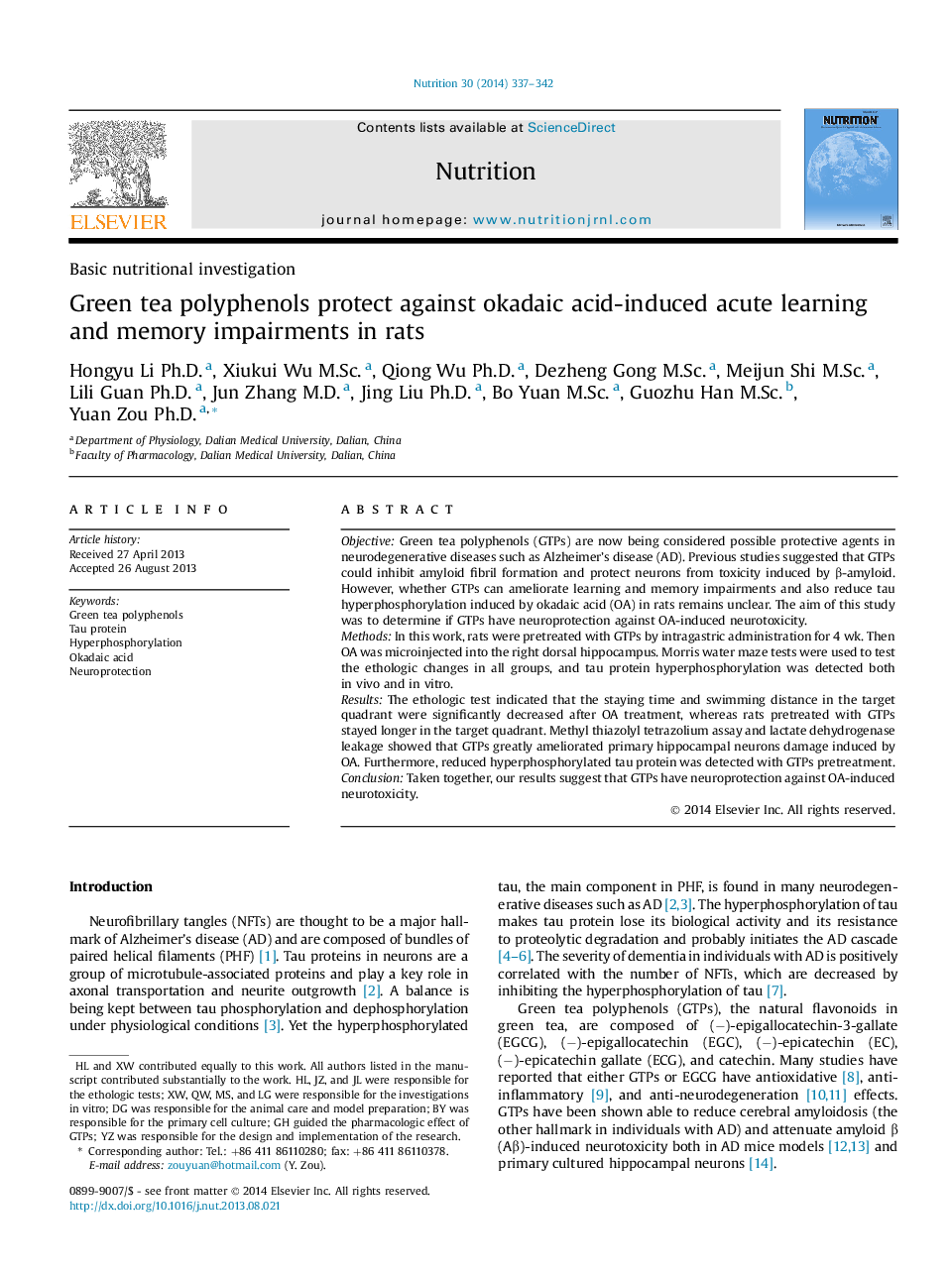| Article ID | Journal | Published Year | Pages | File Type |
|---|---|---|---|---|
| 3276347 | Nutrition | 2014 | 6 Pages |
ObjectiveGreen tea polyphenols (GTPs) are now being considered possible protective agents in neurodegenerative diseases such as Alzheimer's disease (AD). Previous studies suggested that GTPs could inhibit amyloid fibril formation and protect neurons from toxicity induced by β-amyloid. However, whether GTPs can ameliorate learning and memory impairments and also reduce tau hyperphosphorylation induced by okadaic acid (OA) in rats remains unclear. The aim of this study was to determine if GTPs have neuroprotection against OA-induced neurotoxicity.MethodsIn this work, rats were pretreated with GTPs by intragastric administration for 4 wk. Then OA was microinjected into the right dorsal hippocampus. Morris water maze tests were used to test the ethologic changes in all groups, and tau protein hyperphosphorylation was detected both in vivo and in vitro.ResultsThe ethologic test indicated that the staying time and swimming distance in the target quadrant were significantly decreased after OA treatment, whereas rats pretreated with GTPs stayed longer in the target quadrant. Methyl thiazolyl tetrazolium assay and lactate dehydrogenase leakage showed that GTPs greatly ameliorated primary hippocampal neurons damage induced by OA. Furthermore, reduced hyperphosphorylated tau protein was detected with GTPs pretreatment.ConclusionTaken together, our results suggest that GTPs have neuroprotection against OA-induced neurotoxicity.
